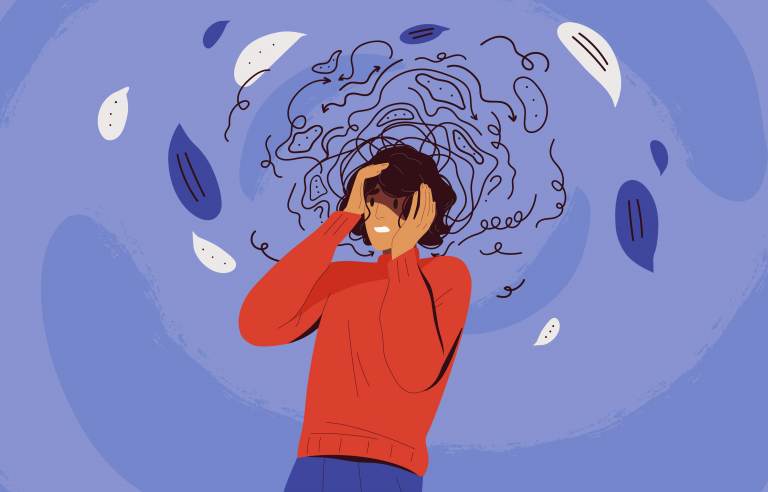The Undercurrent of Anxiety
Listen 49:19
(GoodStudio/Big Stock)
Anxiety can feel like a buzzing electric current that fuels our thoughts and behaviors. There are the well-known symptoms — chest pains, rapid heartbeat, constant fidgeting, shortness of breath, nausea — but anxiety can also be sneaky, rearing its head in all different ways. For instance — maybe it shows up in the way you check your phone constantly, worried that a friend who hasn’t texted back has gotten in a car accident. Or it manifests in your constant chatter at the office, trying to mask the fact that you feel uncomfortable around others. Or it’s the endless doctor’s visits, trying to find some kind of physical reason for why you’re not feeling well.
On this episode, we explore the undercurrent of anxiety so many of us feel, how it impacts our behaviors, and what we can do about it. We hear stories about the unexpected relief from anxiety that some people have felt while working from home during the pandemic, the relationship between anxiety and uncertainty, and advice on how to get through it. We also hear how Maiken Scott attempts to reduce her own over-the-top startle response.
Also heard on this week’s episode:
- Primary care physician Neda Frayha often sees patients who have different symptoms — pain, headaches, dizziness — but test after test finds that nothing is wrong. By all measures, the person is healthy, but they’re just not feeling well. How can she help these patients? Neda discusses what’s called somatic symptom disorder with psychiatrist Melissa Shepard.
Segments from this episode
WHYY is your source for fact-based, in-depth journalism and information. As a nonprofit organization, we rely on financial support from readers like you. Please give today.






